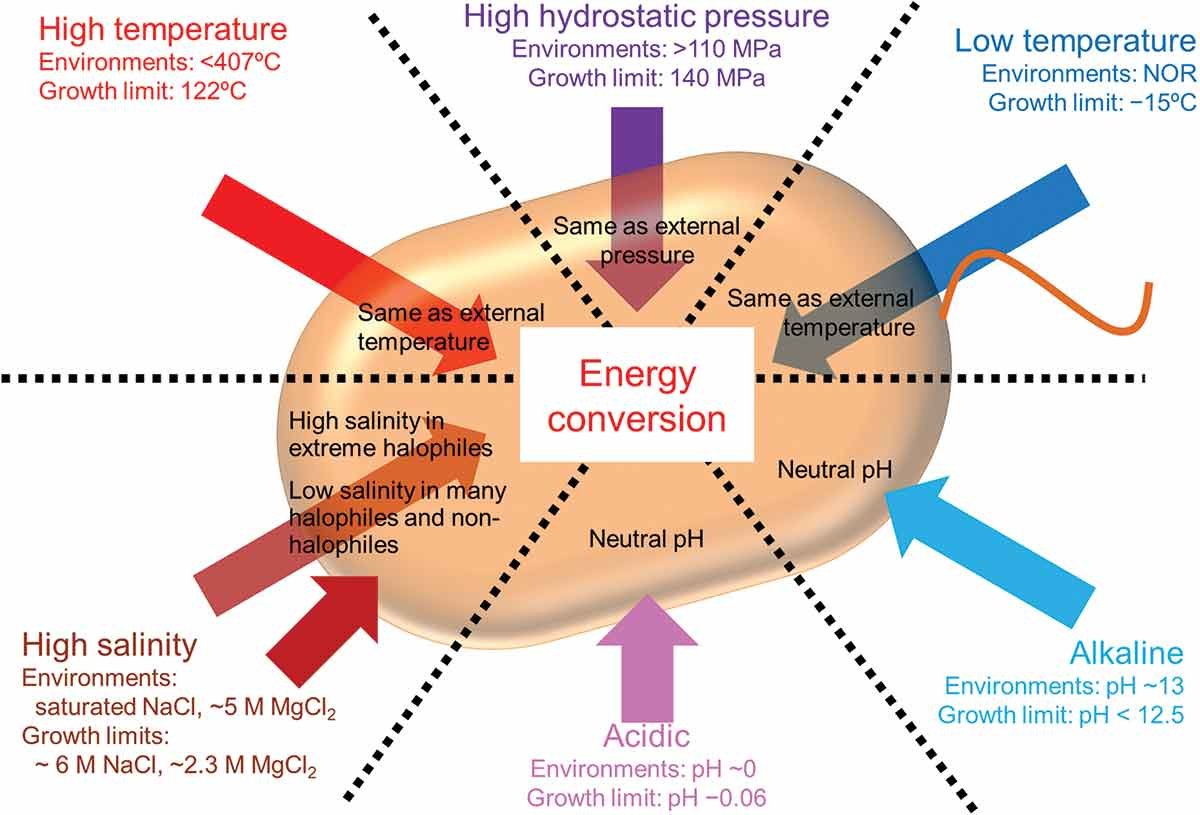Bacteria: They Are Everywhere, They Are Extreme, And They Have A Secret!
“If you don’t like bacteria, you’re on the wrong planet.”
Bacteria? What comes to mind when we hear this word? Most likely, diseases, hand sanitizer, washing your hands, they are everywhere, or the infamous 5-second rule? Most thoughts about the word “bacteria” tend to carry a negative connotation and prompt rapid associations with sickness and disease, because many early microbiological studies were aimed at identifying pathogenic bacteria. However, that shifted quickly as our understanding of bacteria grew exponentially with the development of newer technologies, changing our perspective and leading us to realize that bacteria are indeed everywhere and they play key roles in regulating global biogeochemical cycles that have allowed life as we know it on Earth. As hinted by our opening quote, these amazing life forms can make a living almost everywhere on the planet, even in places where we thought life would not thrive, giving rise to the term extremophiles, a fascinating realm of untapped biological knowledge and biotechnological applications.
Extremophiles are quite fascinating due to their ability to thrive in a variety of environments characterized by very low biologically useful free energy and extreme values of physicochemical parameters such as temperature, pressure, salinity, pH, and radiation, through the evolution of thermodynamically useful reactions and stable biomolecules. These adaptations make extremophiles masters of energy conversion and adaptation by maintaining cellular order under conditions that push biological limits while exporting disorder, thereby increasing the entropy of their surroundings in accordance with the second law of thermodynamics. However, was their emergence an adaptation to living in the extreme, or was the universal flow of energy driving life toward the edges of habitability?
Furthermore, approaches to unify thermodynamics and biology have defined evolution as the thermodynamic process through which self-replicating dissipative structures, like living organisms, co-evolve to maximize the dissipation of free energy and the increase of entropy in the universe, with natural selection fixating structures that are more efficient at capturing and dissipating energy, leading to evolutionary change as a function of thermodynamic optimization; making life an expression of the second law of thermodynamics. Given the previous statement, we should acknowledge that this mechanism is highly likely to have driven the evolution of the adaptations that characterize extremophiles, as they maximize the dissipation of free energy and increase entropy in the universe.
Extremophiles open the door to the idea of an alternative microbial realm on Earth that falls into the category of “terran-non-standard life,” since it is highly likely that the exact mechanisms that shape them to thrive where we thought no other life form could thrive have driven the evolution of nonstandard life. Based on what we know about extremophiles and their evolution driven by entropic mechanisms that we are beginning to understand, unify, and apply within the development of biological systems; it would be unwise to dismiss the possibility of an alternative microbial realm that falls into the category of “terran-non-standard life” since our biological technologies have been designed around the general biochemical architecture of what we define as standard life, characterized by the CHNOPS models. Overall, we lack the tools, methodology, and scientific approach to discover an alternative microbial realm here on Earth, and extremophiles might be the secret to exploring this idea and designing methods to quantify nonstandard life that could help to elucidate microbial dark matter and increase our knowledge of microbial diversity, while expanding the definition of “life” and our understanding of ecosystems.
What are your thoughts on the entropy-driven evolution of extreme and nonstandard life?
Leave your comment below!
If you are interested in entropy as a function of evolution, the link below is a great start to your exploration.




